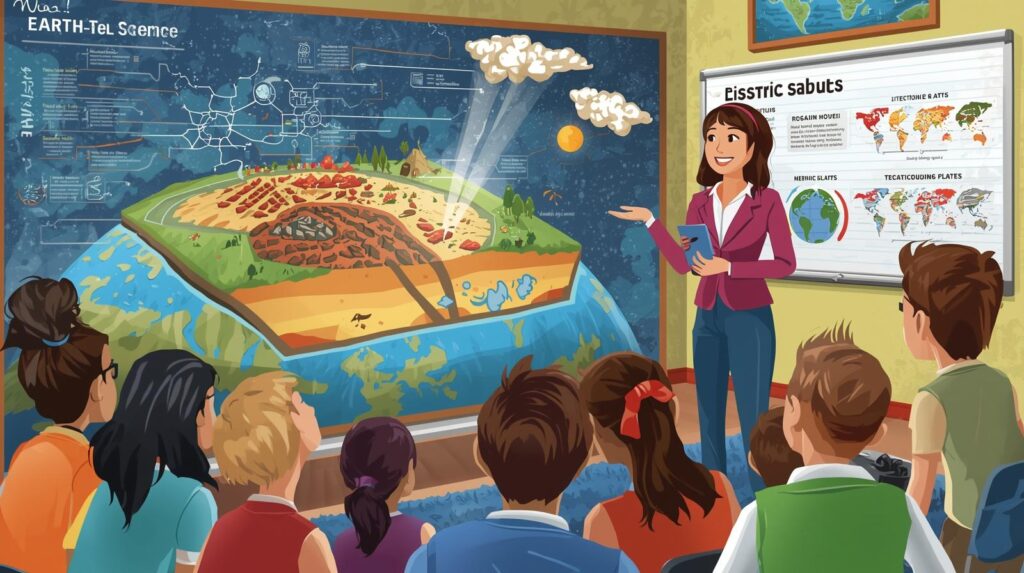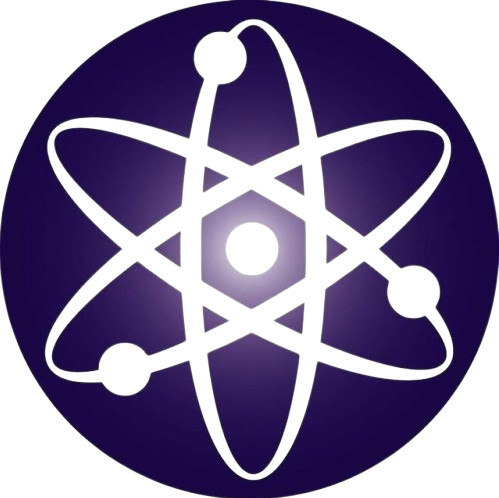Diving into Earth Science Education: A Vibrant Guide to Curriculum and Learning
Think of a classroom packed with students who are fascinated and engaged, studying sparkly rocks, monitoring storms on a map, or wondering why Mars looks different from our planet. That’s the magic of Earth science education, a field that brings the wonders of the planet to the forefront.
Whether you’re a high school student wondering what Earth science is in high school, an educator building an Earth science curriculum, or a parent researching Earth science homeschool curriculum, this guide gets to the core of Earth science education. It’s not rocks and weather; it’s curiosity and comprehension of our world.
What Is Earth Science, Anyway?
In essence, Earth science education is the study of the systems of the planet: geology, meteorology, oceanography, and astronomy. A backstage pass to Earth’s finest hits: how mountains are made, why storms happen, or why the stars twinkle.
In high school, Earth science high school courses typically introduce students to these big ideas, blending hands-on experiments with big-picture concepts. If you’ve ever wondered what grade is Earth science, it’s often taught in 8th or 9th grade in the U.S., though some schools offer it later, especially for advanced or Regents-level courses in places like New York.
Think of Earth science as a giant puzzle. Every sample, from a rock or a weather map, makes students understand how the Earth functions. Plate tectonics (why earthquakes happen), the water cycle (how rain is formed), and the solar system (why seasons occur) are some of the subjects covered in the study of Earth science. It’s less memorizing scenes and more bridging the gaps between, for instance, a volcanic eruption and ash that alters global weather.
The High School Earth Science Curriculum: What’s Inside?
High school Earth science is a map for navigating the planet. It’s constructed to integrate theory with application, ensuring students don’t only learn but sense the science as well. An average Earth science lesson would encompass:
- Geology: Learning about rocks, minerals, and layers of the Earth. Students may discover quartz or understand how tectonic plates grind against each other to form mountains.
- Meteorology: Exploring weather patterns and climate. Think tracking a cold front or predicting rain based on cloud types.
- Astronomy: Diving into stars, planets, and Earth’s place in the universe. Ever calculated the distance to the Moon? That’s the kind of thing you’ll do.
- Environmental Science: Tackling big issues like climate change or deforestation, showing how humans shape the planet.
Classes often mix lectures, discussions, and Earth science labs to keep things engaging. That’s where the fun comes in—students can determine the density of a rock, simulate a tsunami in a water tank, or chart the stars. These activities, such as those in resources like Applications and Investigations in Earth Science, take abstractions and make them concrete. For instance, an erosion lab might entail pouring water over sand to observe how rivers shape valleys, making a textbook idea tangible.
Earth science worksheets are also employed by teachers to solidify instruction. These might be labeling the atmospheric layers or doing problems on earthquake epicenters. The purpose? To encourage students to think like scientists, posing questions and experimenting with ideas.
Why Earth Science Education Matters
Studying Earth science isn’t merely a matter of getting an exam right—it’s learning about the world. Consider climate change: an Earth science course might follow carbon emissions’ effect on global warming, using actual statistics to indicate increasing temperatures. Or natural disasters. Through the study of plate tectonics, students can understand why earthquakes occur in regions such as California and how to keep safe. This information enables them to make decisions, whether it is voting for green policies or selecting a science career.
Furthermore, Earth science is a key to curiosity. A student with an interest in stargazing may stumble upon astronomy due to a lesson on constellations. Another student who’s intrigued by volcanoes may find their calling in geology. The Earth science course sows seeds for future scientists, engineers, or even educated citizens who care about the planet.
Homeschooling Earth Science: A Flexible Path
For families opting for an Earth science homeschool curriculum, the subject is a wide-open field. You don’t have to have a sophisticated lab to get it done; nature is the classroom. A trip to the park can be a lesson in erosion, with children watching how streams carve the earth. Stargazing in the backyard can be a discussion about the solar system. Resources such as Applications and Investigations in Earth Science include organized labs, but you may also be crafty with homemade experiments, such as a model volcano made with vinegar and baking soda.
Homeschoolers also have the option to adapt the Earth science education to their child’s interest. Got a child who loves dinosaurs? Study paleontology and fossils. Enjoy the weather? Explore meteorology with a do-it-yourself weather station. Free videos and Earth science worksheets on sites such as Khan Academy or NASA’s educational site can be used to complement learning. Flexibility is the key. Earth science is all around you, from the rocks on the ground under your feet to clouds in the sky above you.
Earth Science After High School: The Larger Picture
Earth science high school classes provide the foundation, but the topic goes far beyond. In college, offerings such as the University of Texas MSEER curriculum (Master of Science in Energy and Earth Resources) elevate Earth science to new levels. This graduate degree integrates geology, energy systems, and environmental science, training students to go into careers in sustainability, oil and gas, or renewable energy. It’s a great illustration of how Earth science education progresses from high school laboratories to actual problem-solving.
Even if you don’t take a science degree, the skills of an Earth science class, critical thinking, data analysis, and curiosity—transcend everywhere. A climate change reporter, an architect building sustainable buildings, or a policymaker addressing water shortages all rely on Earth science concepts.
Making Earth Science Fun and Accessible
One of the best things about Earth science education is how hands-on it can be. Earth science labs bring the subject to life, whether you’re testing soil samples or simulating ocean currents. Teachers often use storytelling to make lessons stick—like comparing the Earth’s layers to a hard-boiled egg (crust as the shell, mantle as the white, core as the yolk). These analogies help students of all ages grasp complex ideas without feeling overwhelmed.

For struggling learners, compartmentalizing the Earth science curriculum makes a difference. Begin with one subject, such as weather, and add from there. Visuals, such as videos of volcanic eruptions or interactive maps, can make difficult principles click. And field trips—going to a nearby river or planetarium—can make a textbook lesson into a memory that lasts.
Challenges and Opportunities in Earth Science Education
Earth science teaching isn’t always straightforward. Some schools do not have money for laboratory equipment, so it is difficult to maintain interesting Earth science labs. Others have full schedules, forcing Earth science into a single semester. But these are also opportunities. Educators can utilize free online resources, such as NASA climate data or USGS earthquake maps, to make the subject matter come alive without costing money. Local partnerships, such as field trips from local geologists, can also motivate students.
For homeschoolers, perhaps the struggle is building structure. That’s where resources such as Earth science homeschool curriculum guides can help, with pre-planned lessons and activities available. Curriculum programs such as the University of Texas MSEER curriculum also illustrate how Earth science can open up cool careers, encouraging students to persevere.
